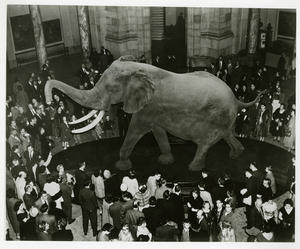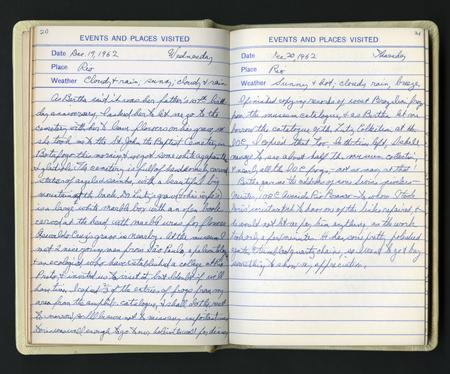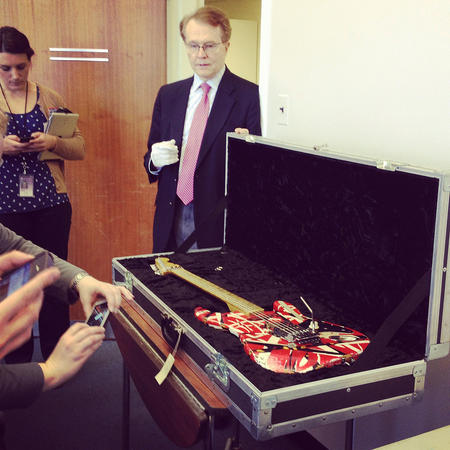From crowdsourcing transcription to building Wikipedia articles, opportunities abound to weave webs of knowledge with Smithsonian Institution Archives (SIA) collections. How can our audience (you!) get involved to help others discover more? Find out with this peek into the ways I'm researching engagement with SIA collections.
I'm fascinated by the ways people communicate while working toward a goal; particularly when that goal is sharing information, from history to science to culture. As a research associate, I'm exploring crowdsourcing for transcription and SIA collections on Wikipedia. I'm using the Field Book Project (FBP) as case study material. I'll gather the best parts of these activities to give our audiences great experiences sharing SIA collections. While transcription and Wikipedia editing demand collaborative audiences, each activity features unique learning curves. So, I shoulder the task of testing them to make navigating those turns easier.
Part of my research, therefore, is evaluating existing transcription projects. I assess elements like narrative, capabilities, and usability on projects:
- New York Public Library's What’s on the Menu?
- Zooniverse projects like oldWeather and Ancient Lives, and
- University of Iowa Libraries' pickings for DIY History
Plus other wiki-based transcription projects. Each project offers excellent features to bring digitized archival collections back into focus. Still, none of these models are "just right" to best tell SIA collections and FBP stories.
We say every collection has a story; indeed, another gripping FBP narrative may be awaiting decryption right now. Recently, I've been poring through SIA digitized collections to root out the compelling stories locked inside. Sometimes the human dimensions of research spill out of tightly scrawled text: the hidden help of assistants, hosts, and companions on expedition. The unique cadences in researcher's field notes are also stories in themselves. Compare Leonard Stejneger's writing with James A. Peters' print. Now see Doris Cochran's travelogue below.
My fieldwork incorporated Smithsonian outreach events. These events linked access to collections with digital approaches to content sharing. My experiences as participant-observer include Wikipedia edit-a-thons with the Archives of American Art (AAA) and the Smithsonian American Art Museum (SAAM), a Flickr tagging party with the Biodiversity Heritage Library (BHL), and Tweet Ups with the National Museum of American History. See a Tweet Up scene below; I'm there in research mode, managing to keep my cool while taking notes next to American Music curator John Edward Hasse and Eddie Van Halen's guitar!
I'll pause and invite you to explore those events links. Work remains and your help is always welcome in extending access to SI collections – with SIA, AAA, or BHL.
Analyzing these events, I considered:
- audience experiences – chances for "seriously amazing" discoveries
- costs to the units and organizers
- event program and goals, plus serendipitous results like these
- curator passion and insight from subject matter experts, and
- the stories behind the collections on display
Have you attended an SI outreach event, perhaps like this berry happy horticultural experience in 1989? Did it change how you think about and share Smithsonian stories?
From observation to action, webs of knowledge remain robust through regular use and delightful discovery. We can draw together SIA and wider SI content by highlighting digital connections; gathering wider audiences through Wikipedia descriptions and transcription activities.

There are challenges with representation and verifying knowledge on Wikipedia. However, we have opportunities to address these issues by improving the pathways to collections content. Think there's no Wiki-point? Consider Michael Szajewski's discussion (2013) of The Hague Sheet Music Collection at Ball State University. Also see my anecdote from the SAAM Civil War Art Wikipedia edit-a-thon.
Ready to spin webs of knowledge? You can join SIA and NMNH for our Expeditions & Explorers Wikipedia edit-a-thon on June 21, 2013 . In addition to editing articles, you'll get the opportunity to preview and test the soon-to-be launched transcription service. It will include our digitized field books and other Smithsonian Institution collections. Sign up here, then preview featured materials. We look forward to your help in telling our collections stories.
One last note: did you notice the variety of resources I linked through this post? Have any of these links added strands to your own webs of knowledge?
Related Resources
- The Field Book Project: Uncovering Hidden Gems at the Smithsonian, The Bigger Picture blog, Smithsonian Institution Archives
- A behaviorist in Panama, Field Book Project blog, The Field Book Project
- Preserving Her Legacy: Coming Together to Preserve the Legacy of Women Scientists on Wikipedia, The Bigger Picture blog, Smithsonian Institution Archives
Related Collections
- Record Unit 7151 - Doris M. Cochran Papers, circa 1891-1968, Smithsonian Institution Archives
Produced by the Smithsonian Institution Archives. For copyright questions, please see the Terms of Use.



Leave a Comment